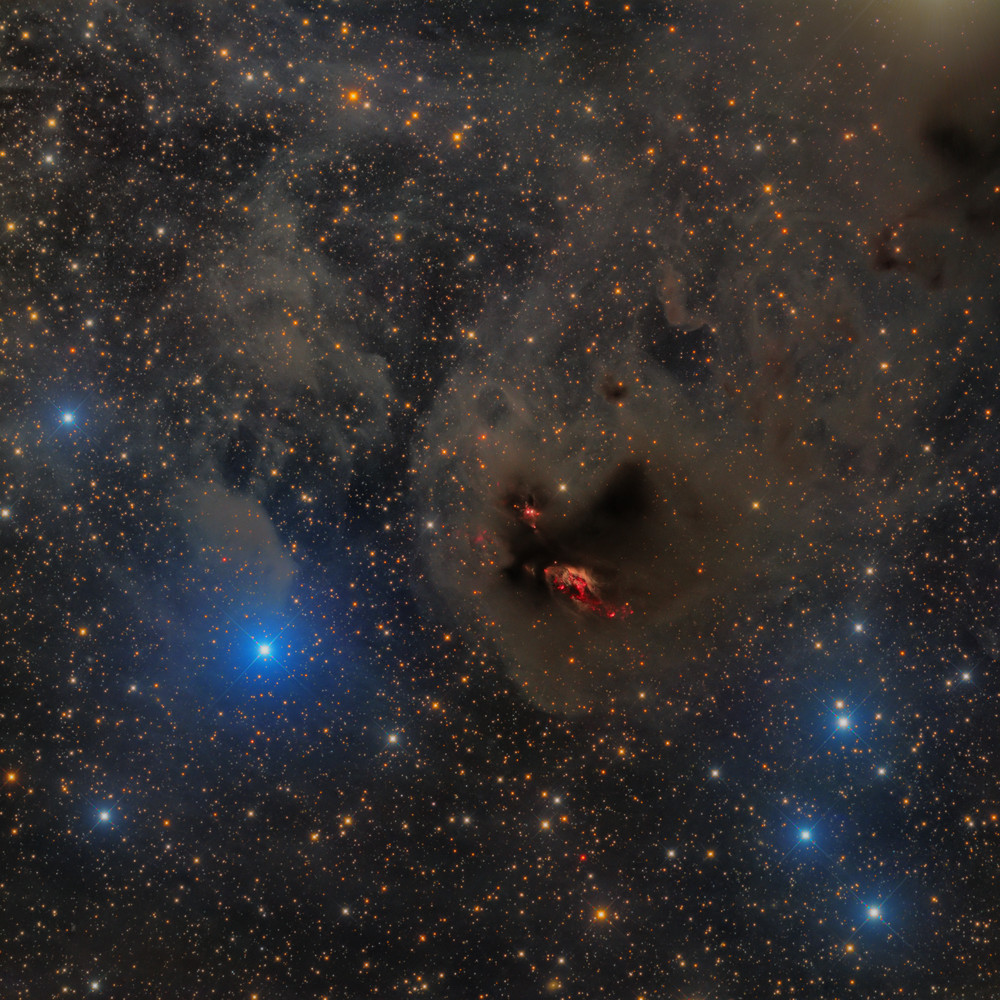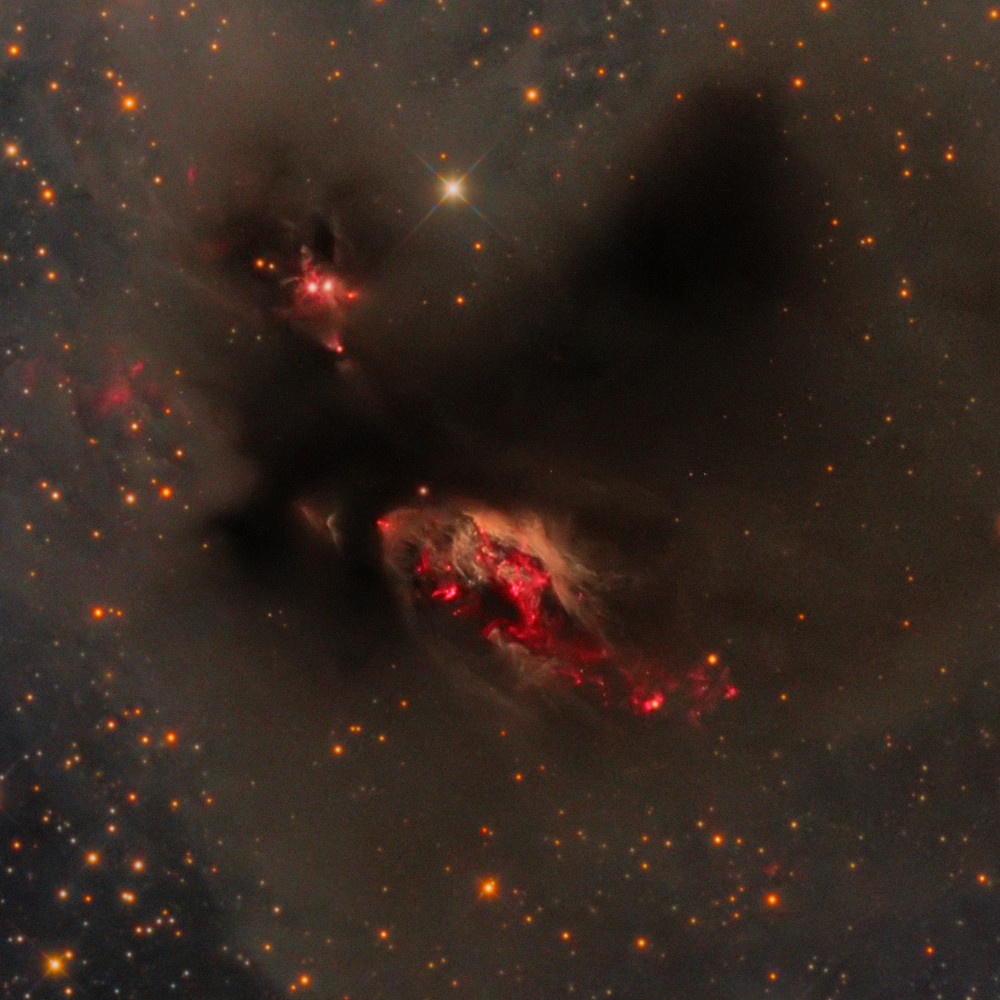Sh2-239 and LDN 1551

MouseOver for object identification, Click on image for a zoomable version (up to 75%)
A Crop (full resolution):

|
|
|
|
Location / Date |
Nerpio (Spain), Jan - Feb 2019 |
|
Telescope / Mount / Guiding |
Takahashi CCA250 (focal length 1250mm) |
|
Camera / Exposure |
Apogee U16M L 55 x 10min Total exposure time: 30h 30min |
|
Processing |
PixInsight, Fitswork, Photoshop |
|
Notes |
Sharpless 239 (Sh2-239 or LBN 821) is a cloud of ionized gas, embedded in the dark nebula LDN 1551. This region lies near the southern end of the Taurus molecular cloud complex, the distance of this object is about 450 light years. In this region active star formation is taking place. Lots of embedded young stellar objects are driving dynamic outflows into the surrounding interstellar medium, including a compact, red jet near the infrared source IRS5, which is known to be a system of protostars surrounded by dust disks. IRS5 is associated with a bipolar HH object known as HH 154 and a large number of shock waves, some of them are also classified as HH objects, in particular HH 28, 29, 258, 259, 262 and 286. Other nearby young stellar objects, among them the T Tauri stars HL Tau and XZ Tau supply energy to other jets, such as HH 30. Herbig–Haro objects (HH) – after the astronomers George Herbig and Guillermo Haro – are narrow jets of gas and matter ejected by young stars at speeds of 100 to 1000 kilometers per second that collide with the surrounding nebula, producing bright shock fronts that glow as the gas is heated by friction while the surrounding gas is excited by the high-energy radiation of nearby hot stars. They are ubiquitous in star-forming regions, and several are often seen around a single star. The stellar jets seem to form as the swirling cloud of dust and gas surrounding a new star escapes. These objects are transient phenomena, lasting not more than a few thousand years. They can evolve visibly over quite short timescales as they move rapidly away from their parent star into the gas clouds in interstellar space. The star formation in this area seems to proceed quickly as told by the rapid evaporation in the foreground. Soon even the deepest parts of this cloud will be blown away and young clusters of stars will shine with exuberance. |